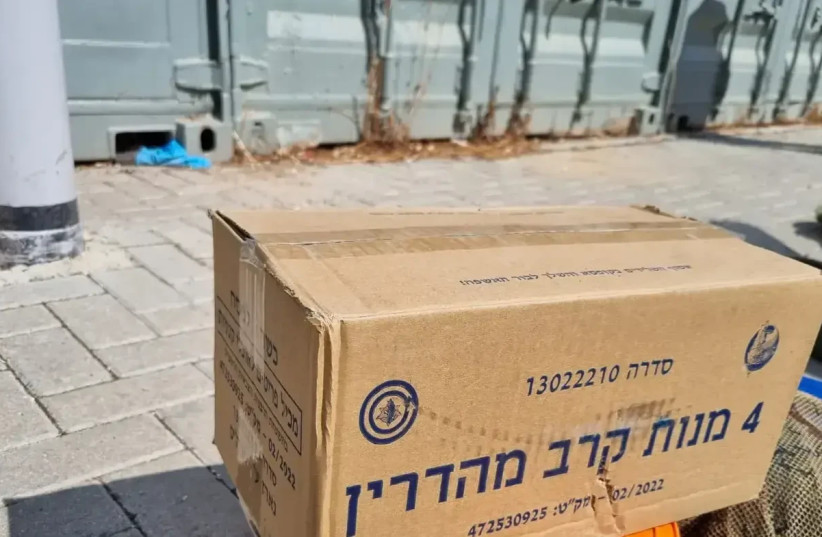The IDF has developed new innovative methods of delivering supplies to combat zones after over a year has passed since the beginning of the Israel-Hamas war, Israel's military disclosed.
"In essence, this is a transition from a two-dimensional to a three-dimensional logistical network," Lt. Col. D., head of the IDF’s Multi-Dimensional Supply Division, said.
The division was reparably established over the past year as part of the Technology and Logistics Directorate and has been responsible, in part, for the transfer of equipment from above through helicopter drops, drones, and even automatic parachute systems.
"The goal," he clarified, "is to create a supply alternative and enable continuous maneuver operations in the absence of an established ground route or due to routes threatened by the enemy. In the last 20 years, we've witnessed erosion in supply methods, especially airborne. This challenge confronted us during the Second Lebanon War."
As fighting continues across multiple fronts, this new field of multi-dimensional supply appears to have quickly become an integral part of life for soldiers on the battlefield.


"During the current war, in Gaza and Lebanon, we planned and executed, in exceptional cooperation with the Air Force and the Height Division, aerial supply operations using various methods,” Lt. Col. D. said. “For tactical forces, for example, we used package drops from helicopters, and for the first time in IDF history, we used logistical drones and automatic parachute systems that self-navigate to their destination."
What is a logistical operation?
"A logistical operation is an act of supplying means and inventory levels required by the maneuvering force in the field to continue and fulfill its mission," the Division Head explained, "This requires analysis, planning, and synchronization with all relevant factors and requires intelligence and fire support."
According to Lt. Col. D., the division has had to work quickly to adapt and find ways to deliver supplies behind enemy lines. He spoke of a time when a unit needed shells, which had to be supplied by parachute.
"We developed a suitable method within a month and a half. Among other things, we found solutions in the form of logistical drones, which parachute ammunition - directly to the forces. All within less than a day from the moment of request until the equipment arrives in the field," Lt. Col. D. said.
In the past months, about eight combined operations have reportedly been carried out by the division, in which about 95 tons of supplies of all types – food, weapons, ammunition, even socks – have been delivered.
"Success for us is that in all cases so far, the force at the end received what it needed to continue fighting and fulfill its missions," Lt. Col. D. noted.
